Increasing productivity at a hospital is no small undertaking - especially given the current physician shortage impacting the healthcare industry. If there are too few clinicians available to treat patients, morale sinks, which negatively impacts productivity. But if the supply of clinicians exceeds demand, the resulting inefficiency can erode already-thin profit margins.
With personnel costs now accounting for nearly 55% of the typical hospital budget, it may seem like there is no cost-effective way to address staffing challenges. But contrary to popular belief, it is possible to balance the needs of patients, clinicians, and operations staff without compromising profit margins.
By implementing a solid workforce optimization strategy, hospitals can make this dream a reality with relative ease.
How does a Workforce Optimization Review boost productivity without adding staff?
A workforce optimization review is a customized financial exercise that can reveal ways to dramatically increase a hospital's productivity without driving up costs. A proper review brings transparency to cost structures and vendor success rates, and can be used to create an effective workforce optimization strategy. Here are five ways a workforce optimization review and subsequent strategy can drive productivity within hospitals.
1) Reveal how much vacancies are costing your hospital
You might be surprised to learn how much vacancies are costing your hospital. The direct cost of replacing or adding a physician is shocking enough. It is not uncommon for hospitals to invest up to a million dollars the first year a new doctor is brought on board. Even more devastating than these costs are the indirect costs of physician vacancies. These include:
- Compromised quality of care
- Mounting pressure on incomplete treatment teams
- Patient dissatisfaction due to a lack of access to physicians
- Loss of patients due to the factors outlined above
Without workforce optimization, it is easy for these costs to remain buried while your hospital gradually begins to lose patients to nearby competitors. A workforce optimization review will bring these costs to light, making them easy to identify at any point in time.
2) Enable the use of predictive analytics to estimate seasonal staffing needs
"We brace for the winter months, and in the summer, when the census may drop as low as eight or 10 patients per physician, everybody takes vacation and more time off... We don't dread the winter months because we're staffed to suit. I know what to expect." - Obinna Egbo, MD, Phoenix Regional Medical Director, IPC The Hospitalist Company Inc.
Predictive analytics can transform a hospital's staffing initiatives in a matter of minutes. Of the many improvements predictive analytics can bring about, the most significant is the ability to forecast seasonal staffing needs with greater accuracy.
Workforce optimization is the key to unleashing the power of predictive analytics and forecasting. When hospitals have access to centralized and standardized data, they can quickly analyze past staffing patterns to stagger vacation schedules and plan to have plenty of staff available during months when the census tends to run high. Conversely, you can avoid overstaffing during times of the year when the census tends to be low.
3) Highlight times to increase and decrease contingent labor
"Anticipating and planning are key to any flexing strategy, regardless of why or when census spikes occur. Surges in volume have led groups to be creative about how to staff up...and how to find other services when doctors are not so swamped." - Paula Katz, Today's Hospitalist
Contingent labor is a must - especially when census spikes occur unexpectedly. Centralized data enables departments to take note of patterns such as census surges that occur during certain months of the year.
Hospitals no longer have to be caught off guard by rapid census changes; a workforce optimization strategy helps department managers anticipate these changes and use contingent labor accordingly.
4) Enable use of Vendor Management Systems to monitor costs and efficiencies
Managing the provider recruitment process can be an overwhelming process for hospital departments that are already stretched thin. The time and effort required to review resumes, conduct interviews, and negotiate contracts can quickly consume a department's human resources.
Workforce optimization enables hospitals to employ Vendor Management Systems to boost efficiency and cut costs. With new technology in place, hospitals can better monitor costs and staffing processes while continuing to deliver high-quality patient care. The end results are improved patient satisfaction and a healthier bottom line.
5) Monitor clinician staffing during consolidations
"Healthcare consolidation improves integration of care and reduces duplication of clinical services. Hospital mergers can lead to operating cost reductions for acquired hospitals of 15%−30%...However, research to date on completed hospital mergers has yet to demonstrate the benefits of consolidation via improved quality, access, and cost." - NCCI Insights
America is in the midst of a second wave of hospital consolidation, with each year since 2011 bringing more consolidation announcements than the previous year. While mergers and acquisitions can help reduce operating costs and prevent duplication of services, they can present challenges to clinician staffing.
By standardizing data across legacy hospitals, workforce optimization enables administrators to develop staffing initiatives well before a merger or acquisition is complete. And with the help of predictive analytics, clinical staffing needs can be estimated by analyzing each legacy hospital's existing staffing data.
The Bottom Line
When a hospital functions better, the end result is higher satisfaction among clinicians and patients alike. By breaking down information silos, workforce optimization paves the way for transparency in costs and staffing. And through sufficient staffing and real-time data, clinicians are able to maximize their potential and propel your hospital to the next level of success.
To begin optimizing your workforce, contact the VISTA team today for a complimentary Workforce Optimization Review.
VISTA is proud to offer solutions to healthcare facilities and practices looking to maximize their staff population and minimize the costs of physician vacancies. Please contact us today to receive your complimentary Workforce Optimization Review and learn more about our services.


